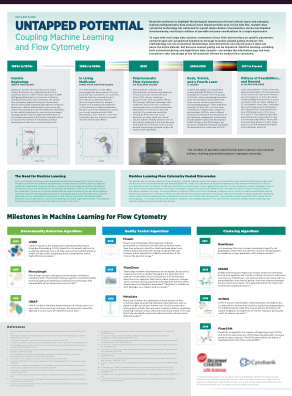Research continues to highlight the biological importance of novel cellular types and subtypes, making multiparameter data analysis more important than ever. In line with this, modern flow cytometry technology has advanced to a point where dozens of parameters can be investigated simultaneously, resulting in millions of possible outcome combinations in a single experiment.
To cope with such large data volumes, researchers focus their observations on specific parameters centered on pre-established hypotheses through manually guided gating. However, this methodology can miss important relationships and connections not only because it does not parse the entire dataset, but because manual gating can be imprecise. Machine learning-assisted analysis can help researchers to take advantage of the full potential offered by modern flow cytometry.
Request A Printed Poster Request A Digital Poster




